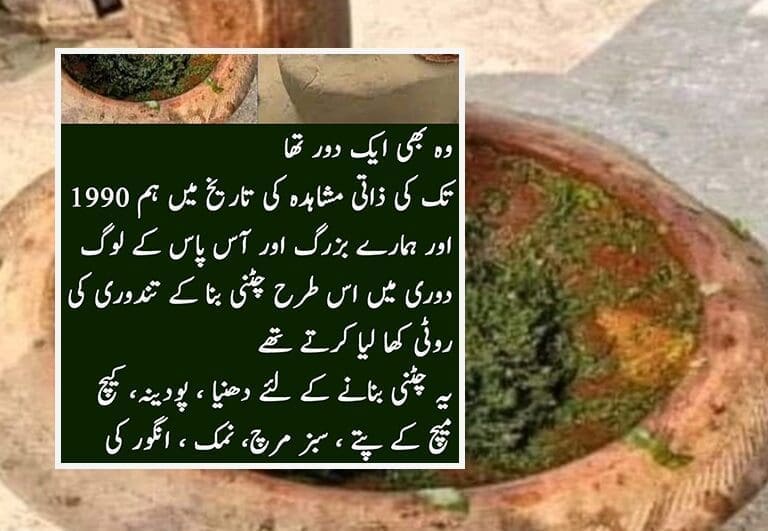In a world that is continually transforming, it’s entrancing to require a stage back in investment and return to the food culture of bygone eras. The expression “وہ بھی ایک دور تھا” transports us to a time where effortlessness and local area were the substance of life. We should jump into the past and investigate the culinary customs that won until 1990.


The Unassuming Chutney and Baked Roti
In the times of old, individuals in towns and encompassing regions made an exceptional delicacy by making roasted roti with chutney. This chutney, produced using fixings like coriander, mint, green chilies, salt, and delicate grapevine leaves, was a typical backup. Shockingly, tomatoes were hardly utilized in these recipes.
One striking method included breaking a whole onion over an oven cooked roti and getting a charge out of it. Assuming that there were no vegetables accessible, the inhabitants would coordinate their roti with achar (pickle) or jaggery.
The Salan Custom
The dish known as “salan” was a unique case in those times. It was ordinarily arranged when the neighborhood towns began developing vegetables. Without new produce in stores, the act of planning salan was rare.
The Story of Two Regions
In our town, there were two regions, Heathla Wihda and Utla Wihda. The two regions had two shops where gur (jaggery), sugar, lentils, and different basics were accessible. The accessibility of meat relied upon the penance of a halal creature, frequently saved for extraordinary events or visitors. These creatures were presented as qurbani (penance) and ready by the mosque’s imam.
A Period of Straightforwardness
In those days, families shared a comparable structural style, with covered rooftops or dry bramble walls encompassing their homes. The entrancing part of that period was that individuals were content and lived amicably. There was no financial misery, and each family had enough to eat, no matter what the variety in their dinners.
Extraordinary Names
The past times additionally saw people with extraordinary names like Achho, Akroo, Isa, Musa, Attaullah, Forbidden, Shoku, Liyako, Bau, Jhao, Zaloo, Tari, Bishoo, and some more. They would assemble in the early evening to cull natural products from trees like berries, jaman, and amrood, partaking in a brilliant blowout. They would crunch on guavas, oranges, and, surprisingly, the sap that overflowed from the gond (gum) tree. They’d eat crude vegetables and cooked chickpeas.
The Two Feasts per Day Custom
In those times, individuals ordinarily had two dinners every day. The first was early lunch, which generally occurred around 10 to 11 AM, and the second was supper, just before dusk. These eating times were totally followed and took into account assimilation before sleep time.
A Time A distant memory
The recollections of our experience growing up are carved ever, and they infrequently reemerge when we hear phrases like “وہ بھی ایک دور تھا.” It’s a demonstration of a less complex, less confounded life, where individuals valued each second, and the worries of today were a long way from the real world.
As we think back on the culinary customs of the past, it’s obvious that circumstances are different essentially. Today, we partake in the advantages of advancement and comfort, however esteeming the straightforwardness and fellowship that once characterized our lives is significant. The expression “وہ بھی ایک دور تھا” helps us to remember when individuals were content, and each feast was a common encounter.



